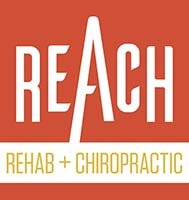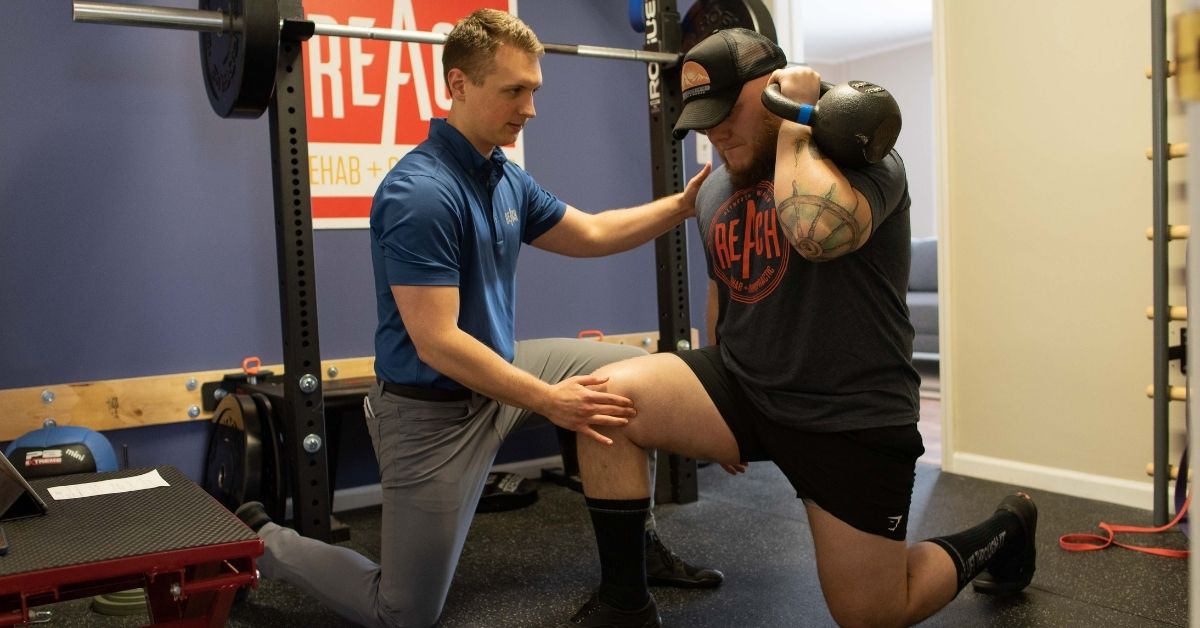We all lead busy lives, and often the stress and strain of sedentary work and repetitive movements catch up with us, causing pain and decreased mobility. With these short exercises to help you relieve pain, these concerns will become a thing of the past.
At REACH Rehab + Chiropractic Performance Center, we guide people to pain relief by helping them understand the problem, why it’s there, how to get it better and learn how to keep it better by enhancing their self-care to live their best lives.
We start by understanding the cause and source of the pain using the McKenzie Method of Mechanical Diagnosis and Therapy (MDT) assessment. Then we use our diverse variety of chiropractic and physical therapy tools to get you better, and fast.
With hundreds of hours of post-graduate work and training, Dr. RJ Burr and Dr. Mitch Israel offer an advanced integrated approach to pain relief, focusing on simple, short exercises to help you relieve pain and learn how to keep it away.
Relieve Hip & Back Pain
Hip and back pain can occur suddenly, but the root of the pain stems from long-standing behaviors, including sustained poor posture and inefficient body mechanics, e.g., lifting with your back and not your hips and legs. Our bodies need to move, so the stress of long-term sitting day after day eventually leads to stiffness, aches, and pain.
To help relieve hip and back pain:
- Go into a half-kneeling position
- Drive your hip forward, extending your torso backward gently
- Don’t tuck your tailbone as you stretch
- Put your hand on the back of your hip and push the extension, pulsing at the end
Repeat the stretch on the other hip. This helps relieve the pressure and stretch building up in the muscles of the hip and lower back.
Relieve Sciatica Pain
Sciatica pain can be excruciating, but taking time to stretch the muscles and nerves can not only relieve the pain but also reduce its reoccurrence. A seated sciatica nerve stretching, called “flossing,” helps relieve the nerve and surrounding muscles.
- Sit in a chair or supportive surface before you begin
- Kick out your leg in front of you, tensing the nerve (but not too much)
- Lean forward to increase the stretch; backward to slack it
You can also kick your leg forward and kick your head backward simultaneously, increasing the stress and tension to slide and glide the sciatic nerve through the tight muscles that may be causing it to be “stuck.” Work on the affected leg. However, for prevention, it’s a good idea to switch between legs to keep the sciatic nerve and its surrounding tissues mobile.
Reduce Pain & Increase Mobility
Sitting for long periods at work or school can cause your head, chest, and shoulders to round forward, which can cause your cervical (neck) and thoracic (mid-back) spine to ache and spasm. Taking breaks to relieve the pressure and adjusting your posture is the best, simple way to prevent pain.
You can do this seated thoracic spine exercise anywhere to ease back pain and stiffness.
- Sit in a chair with a good, upright posture
- Push your chest forward with a “proud chest” like a string attached to your chest is pulling opposite of you
- Slowly pulse back and forth without forcing it
This thoracic stretch is simple and effective. And is ideal for you if typical mid-back stretches or exercises are too complex or painful for you.
Neck & Shoulder Pain Relief
Many stretches can relieve neck pain and stiffness in the shoulders. One of the most effective for long periods of sitting is the sustained neck extension. In most cases, this exercise can provide instant relief for neck and shoulder pain and helps prevent the pain from recurring.
- Lay on your stomach
- Prop your forearms in front of you
- Tuck your chin, then look up
- Rest your chin on your fists, then put your hands into prayer position and rest your chin on your fingertips
- Keep looking up and let your heart/ ribcage sink down
Do not pulse or extend your stretch to the point of pain. Hold the position for up to three minutes, 2-5 times a day depending on your tolerance and the effect of the exercise on your body. If you feel the exercise is actually making you feel worse five minutes afterward, this exercise is not for you!
Posterior Expansion Breathing Exercise
Breathing into your upper back and rib cage naturally mobilizes the joints to help ease pain in the thoracic region, improve spinal mobility, and relieve stress.
- Lean on a desk or table
- Elevate your left side with a yoga block or some books
- Push away with the right, lower hand and round the mid-back and shoulder area
- Focus your breathing on filling the right shoulder blade and backside rib cage
You should feel a good stretch during this exercise and may even hear some pops and cracks as you do so. This is entirely normal and a good thing as it confirms your getting healthy movement of the spine and rib cage joints.
Chiropractor Plymouth, Michigan | REACH Rehab + Chiropractic Performance Center
Does one or all the exercises above help? Great, we’re happy they helped! Did the exercise(s) help temporarily, do nothing, or possibly made you feel worse (if so, stop immediately)? That’s okay, but your body is saying it needs something different where a qualified clinician can help you solve the puzzle!
Pain can be complex and frustrating. REACH Rehab + Chiropractic Performance Center offers holistic, patient-focused care that focuses on the cause(s) of pain as much as the solution.
If it hurts to move, it is essential to know why so you can properly treat it and prevent it from happening again.
At REACH Rehab, Dr. RJ Burr, Dr. Israel, and our friendly staff believe in treating pain and immobility with a physical approach through stretching and short exercises to help you relieve pain. If you’re looking for a chiropractor in Plymouth, Michigan, you can book an appointment or contact us directly at 734-530-9134.


